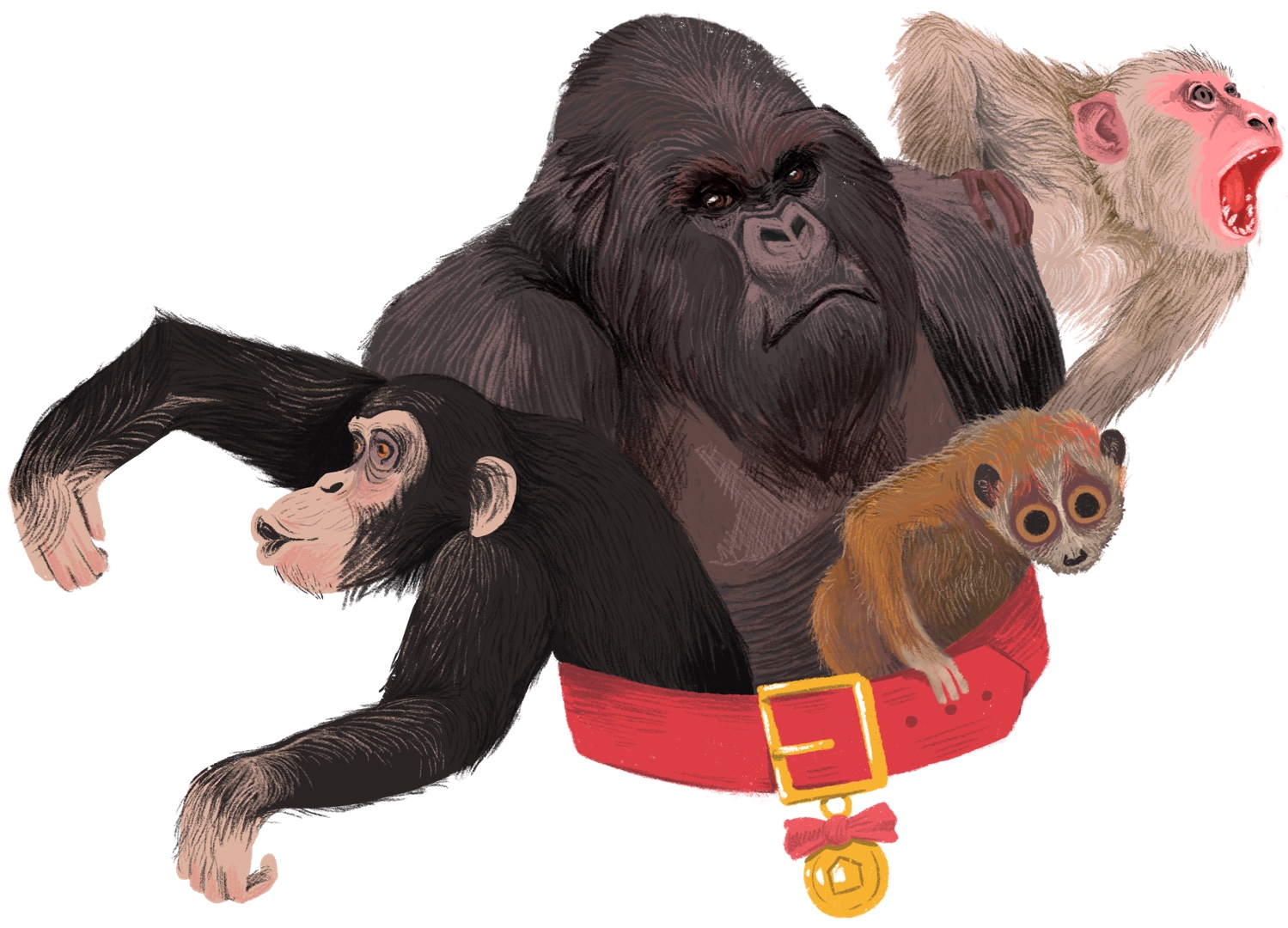More than 5 billion people across the world use social media, including many wildlife scientists, conservation practitioners, and zoo and aquarium professionals. There are many reasons for a wildlife professional to be on social media—it can be a great platform for science communication, fundraising and educating the public about conservation threats to species.
But there is also a downside to it. Posts showing people interacting directly with wildlife can inadvertently set a bad example for the public about how to behave around wild animals. These include “wildlife selfies”—photos wildlife professionals intentionally take and post with the goal of sharing their work. Such selfies are often posted with captions stating the professionals’ qualifications to interact with wildlife as a disclaimer for the public that they should not do the same.
Images and videos depicting people interacting with primates are particularly risky. For example, a 2013 study examined the comments of a YouTube video of a pygmy slow loris (a CITES-I listed species) being “tickled”. The video went viral because the loris’ natural threat response behaviours were perceived by the audience as being cute and funny. It accumulated over 12,000 comments, with more than 11 percent of commenters stating without prompting that they would like one as a pet.
Social media facilitates the primate pet trade, by connecting sellers and buyers and by fuelling demand for animal photo opportunities. Previous research has demonstrated that simply seeing images of humans interacting with endangered primates has negative effects on their conservation by decreasing viewers’ perception that these animals are endangered and increasing their desire to physically interact with the animals, including keeping them as pets. Primates, like other wild animals, should never be kept as pets: primates sold in the pet trade are often taken directly from their mothers in the wild, a traumatic experience. Not only are they deprived of their natural existence, but they can also pass diseases back and forth with their human owners. Larger primates, such as chimpanzees, are extremely strong and can seriously injure people.
To investigate whether wildlife professionals can responsibly post images of themselves with primates on social media, we designed an experiment to test whether “disclaimer” captions are effective in mitigating the potentially harmful perceptions generated by these images. We created two sets of mock Instagram posts, one set showing an image of a person near a mountain gorilla and the other an image of a person holding a slender loris. Each set of posts, designed to appear as if they were posted by a generic user, ‘mark545’, was identical except for the captions. One set had a very simple caption introducing the animal in the image. The other had a longer caption introducing the animal and stating that the “poster” was a researcher who had proper permits and training to interact with the animal. Then, using an online survey platform, we presented one of these four mock Instagram posts to each of 2,977 survey respondents, asking them questions about their perceptions of the animal in the image.
We discovered that disclaimer captions do not mitigate the potential harm of posting images of people alongside primates. Respondents who saw one of the mock Instagram posts with a disclaimer caption were 9.5 percent more likely to strongly agree that the image depicted wildlife research, so we know they read the captions. However, these respondents were just as likely to report they would seek out an opportunity to interact with the gorilla or loris—around 70 percent of survey respondents agreed or strongly agreed with this statement. Around 57 percent of survey-takers who were shown the gorilla image responded they would like it as a pet, with about 62 percent of respondents who saw the loris image stating the same.
Another striking result was that about 60 percent of respondents agreed or strongly agreed that they would like to have a gorilla or loris as a pet. While this doesn’t mean all those people are actively trying to obtain a primate pet, the prevalence of that sentiment is much higher than we expected.
The real-world implication of our findings is clear: wildlife professionals—particularly those who work with primates—should refrain from posting selfies with their study animals on social media. While we cannot say for sure whether our findings extend to images of other animals, in the absence of evidence that they do not, we highly recommend they act with the animals’ best interests in mind. The conservation and animal welfare risks simply do not outweigh the science communication benefits.
Further Reading
Freund, C. A., K. A. Cronin, M. Huang, N. J. Robinson, B. Yoo and A. L. DiGiorgio. 2023. Effects of captions on viewers’ perceptions of images depicting human-primate interaction. Conservation Biology: e14199. https://doi.org/10.1111/cobi.14199.
Nekaris, K. A. I, N. Campbell, T. G. Coggins, E.J. Rode and V. Nijman. 2013. Tickled to death: Analysing public perceptions of ‘cute’ videos of threatened species (Slow lorises – Nycticebus spp.) on Web 2.0 sites. PLOS ONE 8(7): e69215.https://doi.org/10.1371/journal.pone.0069215.
Norconk, M. A., S. Atsalis, G. Tully, A. M. Santillán, S. Waters, C. D. Knott, S. R. Ross et al. 2020. Reducing the primate pet trade: Actions for primatologists. American Journal of Primatology 82: e23079. https://doi.org/10.1002/ajp.23079.






